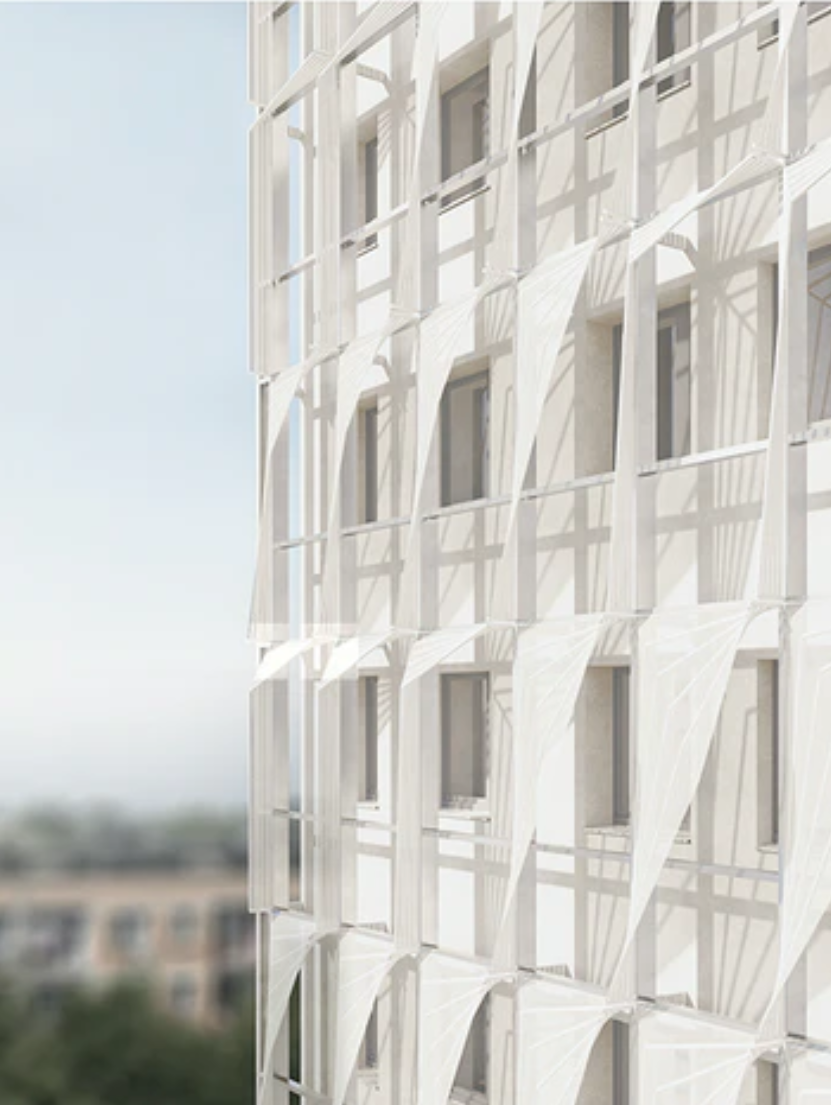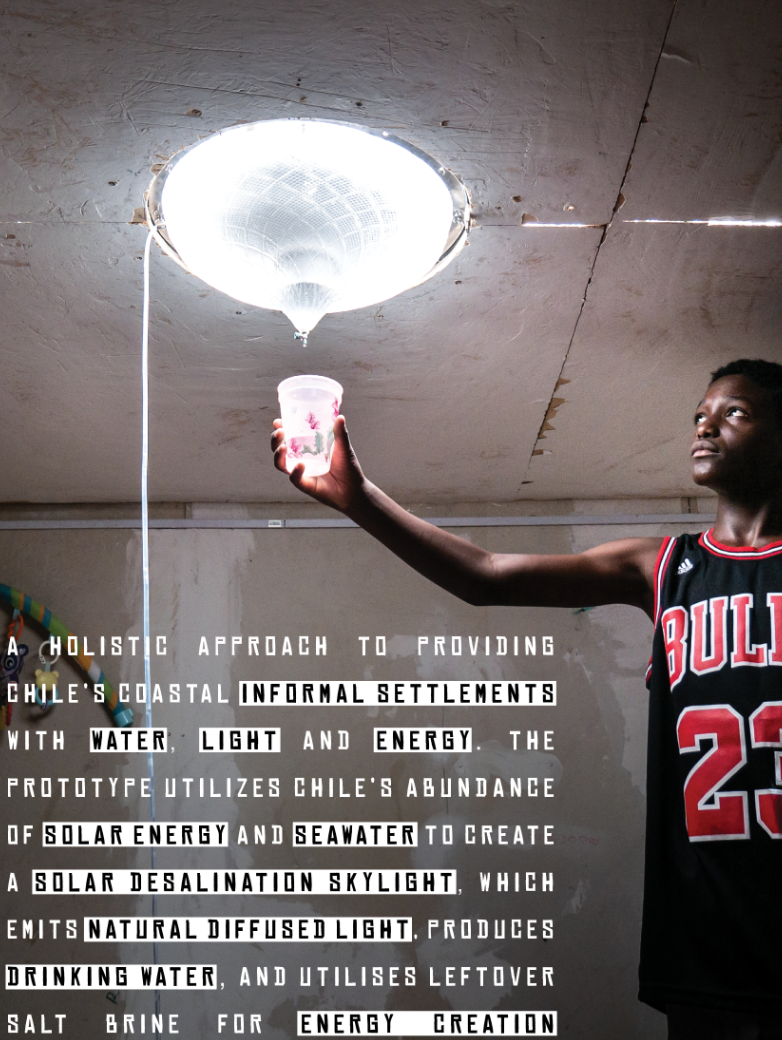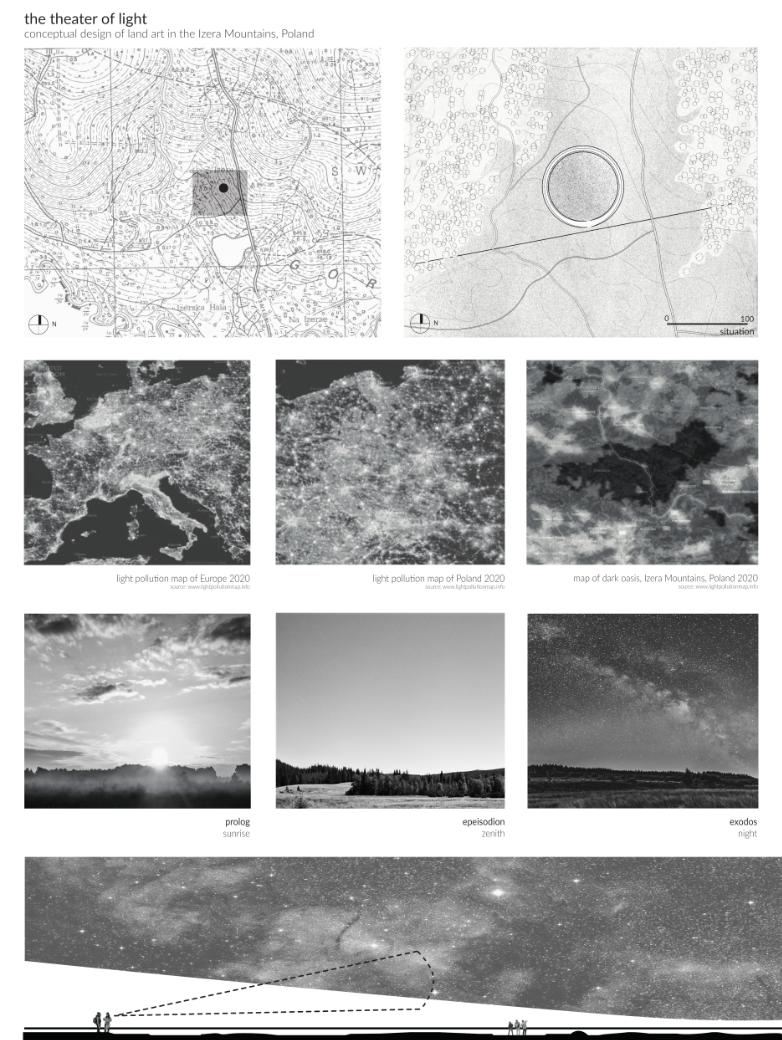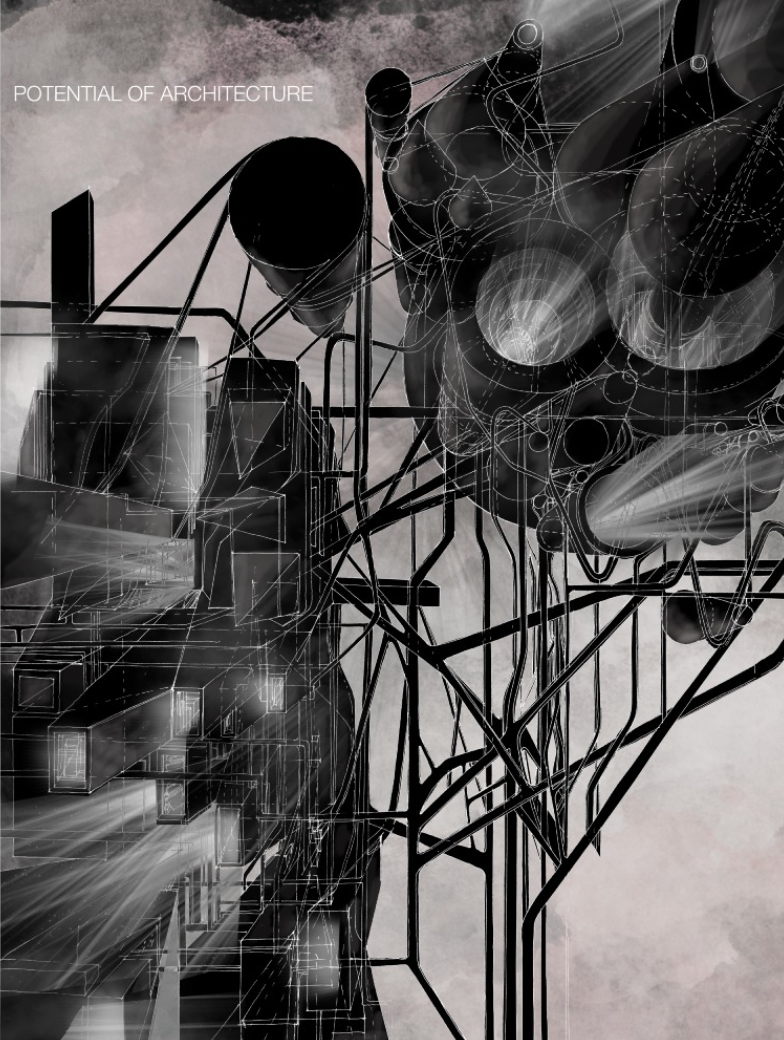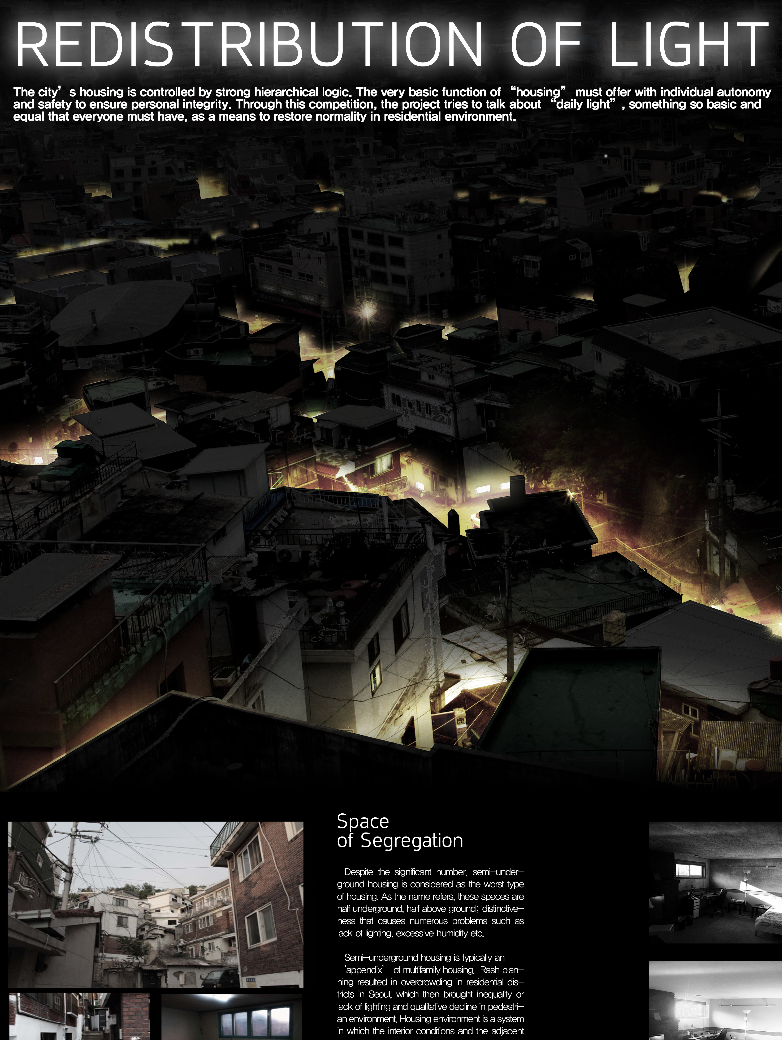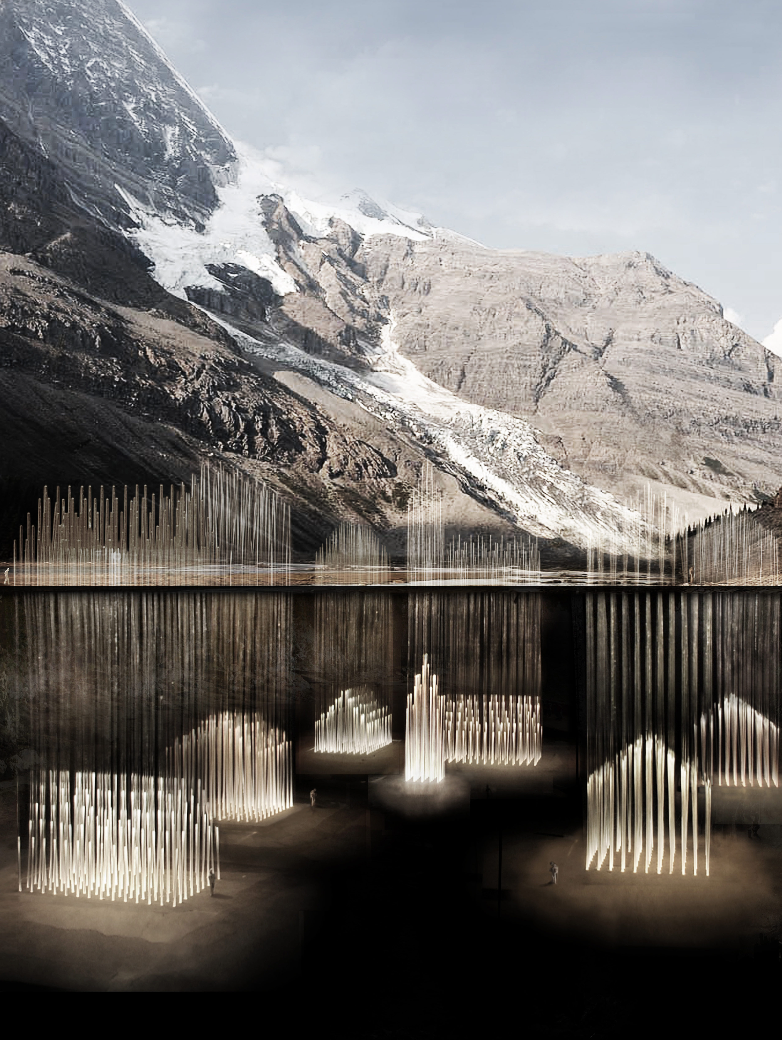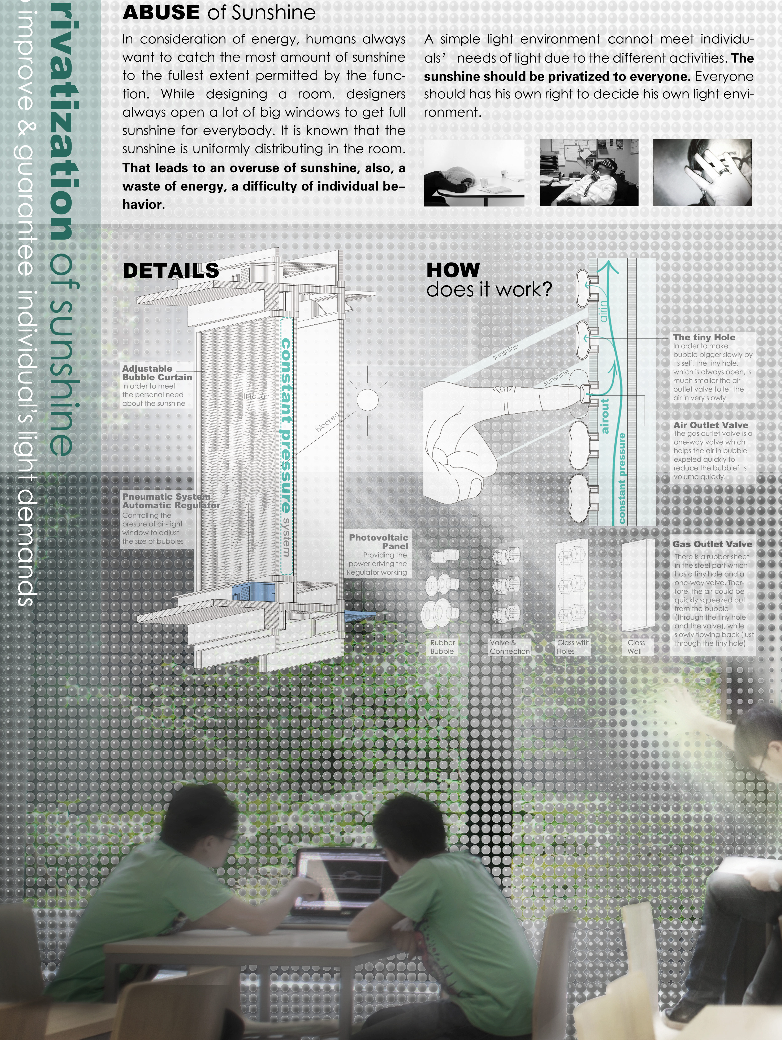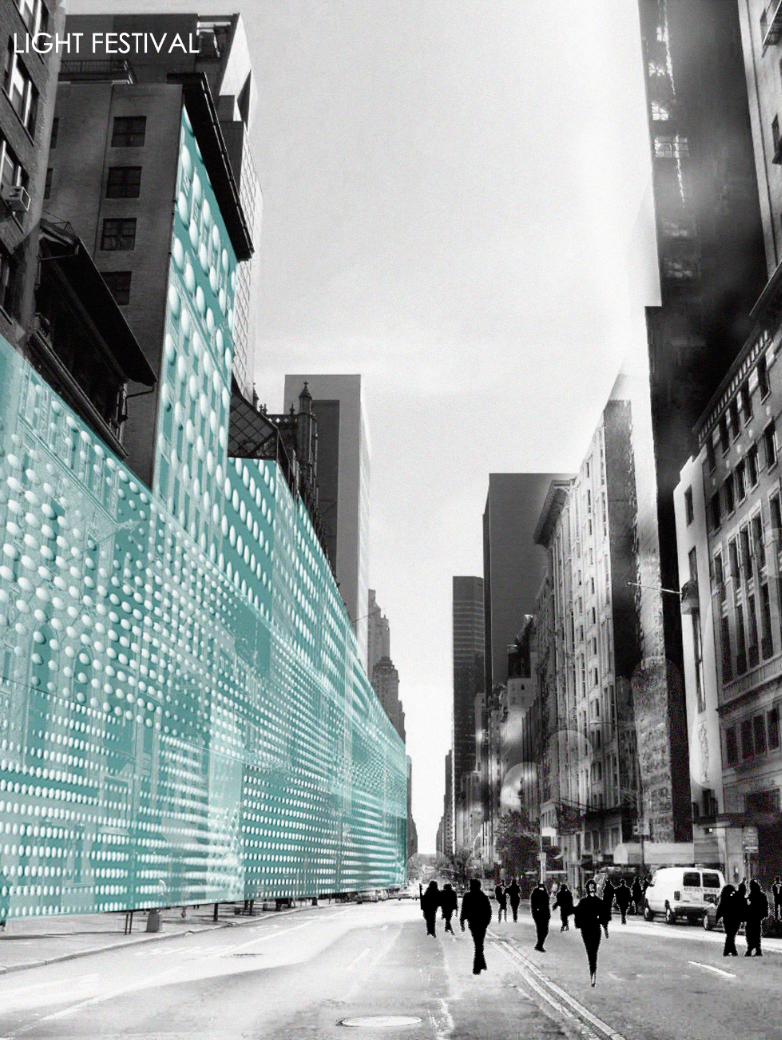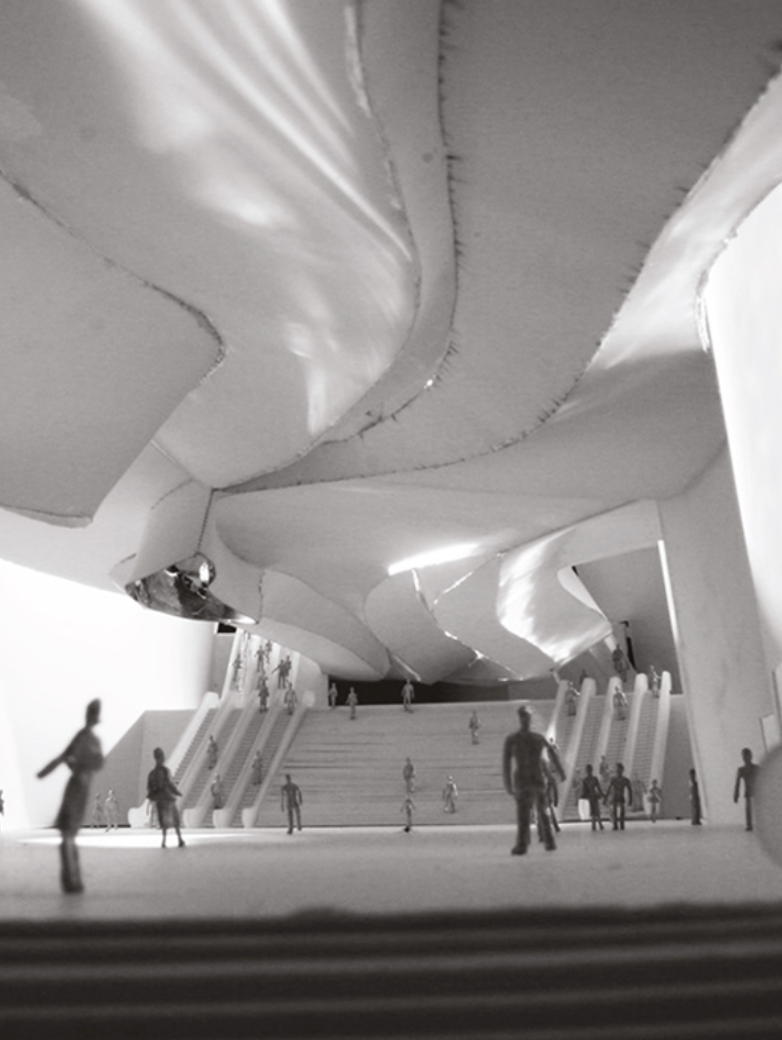2024 - Relight the City

Category
Daylight In Buildings - Region 1: Western Europe
Students
Julia Semken
Teacher
Scott Pollock
School
Jade University of Applied Sciences
Country
Germany
Download
Download project board
„Relight the City“ transforms vacant department stores into vibrant cultural hubs. By integrating a central light shaft, crowned with a glass pyramid and enhanced with mirrors and prisms, these historic spaces get flood with natural light, creating sustainable, multifunctional environments that honor the past and embrace the future.
Problem
Cities around the world are witnessing a troubling rise in vacant buildings, particularly within their bustling downtown areas. The once-vibrant department stores, built for a bygone era, now stand empty and desolate. These colossal structures, designed to trap consumers in artificially lit, sprawling spaces, have fallen victim to the rise of online shopping and changing
consumer habits. The challenge of repurposing these massive, outdated edifices is formidable. Many were designed with little regard for natural light, creating environments that are now not only uninviting but also difficult to adapt to modern needs. Major department store chains have closed their doors, leaving behind empty buildings that cast long shadows over our urban landscapes.
Idea
„Relight the City“ addresses this pressing issue with an innovative and hopeful solution. At the heart of the project is a central light shaft, crowned by a striking glass pyramid that channels daylight deep into the building. This light is further amplified and distributed by a sophisticated system of mirrors and prisms, transforming dark, unutilized spaces into bright, welcoming environments. These spaces are reimagined as art galleries, cultural venues, studios, libraries, and co-living areas, breathing new life into these historic structures.
The approach goes beyond mere architectural innovation. The introduction of green spaces and vertical gardens within the light shaft enhances the indoor environment, improving air quality and providing a serene atmosphere that fosters creativity and well-being. The revitalized buildings serve as dynamic cultural hubs, offering spaces for community events, educational workshops, and
artistic performances. This integration of diverse functions not only attracts a wide range of visitors but also creates a vibrant, interconnected community. By blending historical preservation with contemporary design, we honor the architectural heritage while meeting the demands of modern urban living.
„Relight the City“ exemplifies how thoughtful design can transform urban challenges into opportunities for renewal and growth. It showcases the potential of adaptive reuse in creating sustainable, multifunctional spaces that enrich the cultural and social fabric of our cities. As the project brings light back into these forgotten corners, it illuminates a path forward for
urban regeneration, inspiring a brighter, more resilient future for our communities.
Solution
In the former department store building, a system is implemented to maximize natural daylight using a pyramidal glass structure on the roof, surrounded by adjustable mirrors. Positioned centrally on the roof, this structure captures sunlight and directs it downwards into the building. Placed around the pyramidal structure, these mirrors are motorized to track the sun‘s movement throughout the day, reflecting sunlight onto the pyramidal structure and enhancing its ability to capture
and channel daylight. The pyramidal glass structure acts as a focal point, collecting sunlight from all directions. The mirrors are programmed to tilt and rotate in real-time, ensuring optimal reflection of sunlight onto the glass structure. Sunlight entering the glass structure
is diffused and distributed evenly throughout the building via internal reflectors, providing uniform illumination across different floors and spaces. Maximizing natural daylight reduces the need for artificial lighting during daylight hours, resulting in potential energy 3 of 4
savings. The diffuse natural light creates a visually pleasing and comfortable indoor environment. Harnessing daylight reduces the building‘s reliance on electricity, aligning with sustainability goals and potentially reducing its carbon footprint.
Conclusion
The daylight optimization system effectively utilizes sunlight to illuminate the vacant department store building, enhancing potential energy efficiency, visual comfort, and sustainability. By combining a pyramidal glass structure with adjustable mirrors, a simple yet efficient solution is created to maximize natural daylight indoors.
